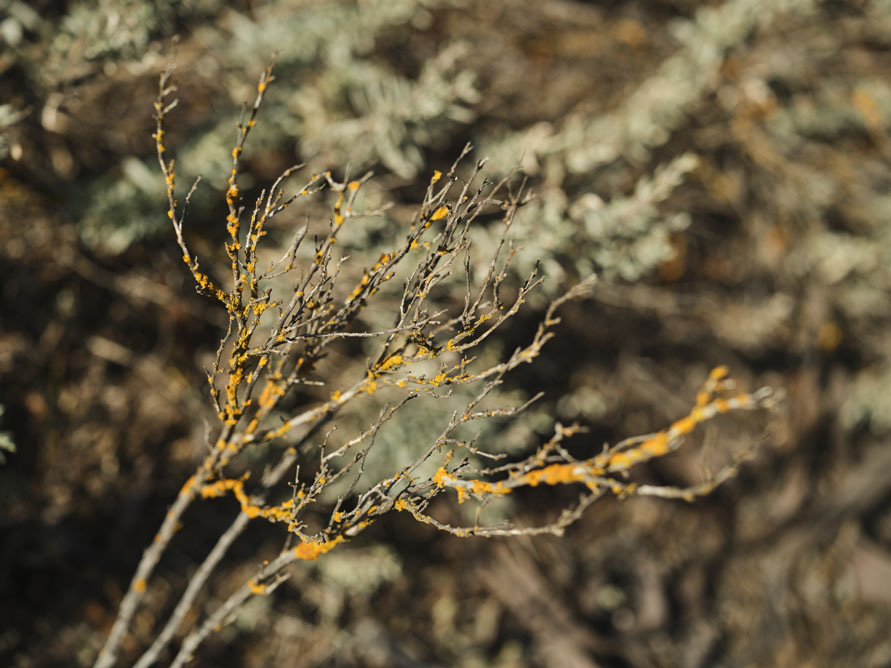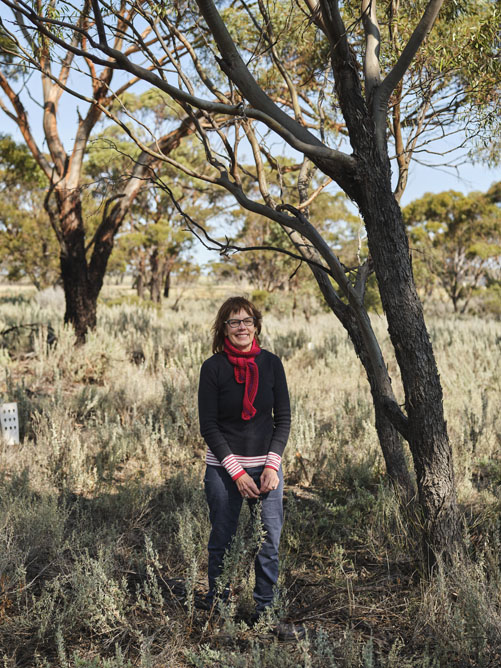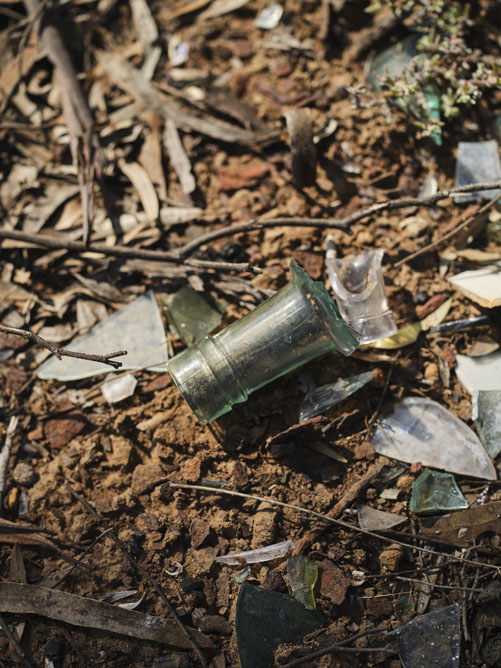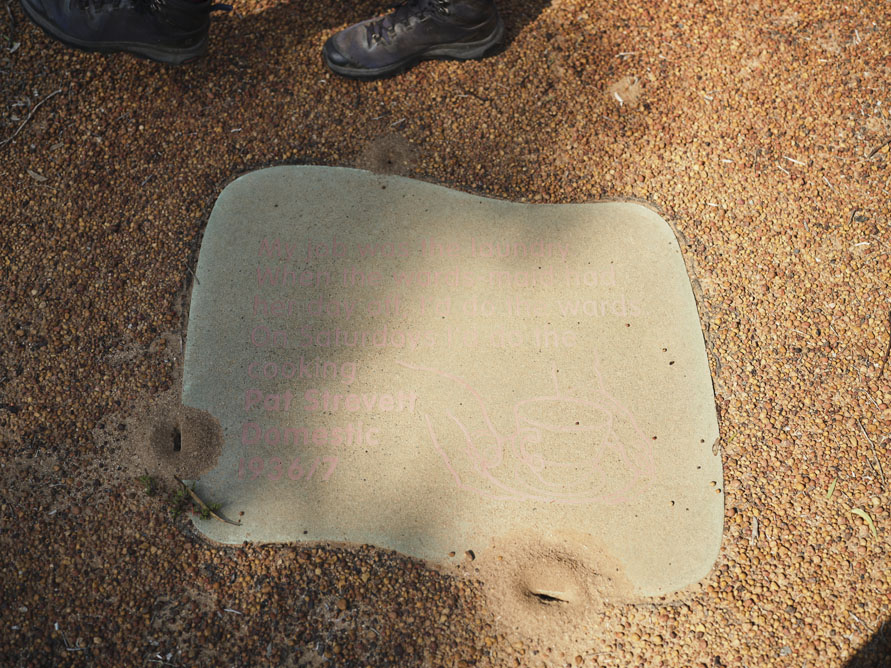“It is about wonder and curiosity, walking in the bush. But there is also a sense of loss, grief, and worry. Worry about the state of the environment, and wondering, ‘Will this still be here?’” says Michelle Slarke, who features in The Alternative Archive exhibition.
This deep curiosity and concern for the environment underpins Michelle Slarke’s interdisciplinary practice. Based in Lake Grace, in the Wheatbelt region of Western Australia, she is a visual artist, a writer and designer, and a heritage and interpretation consultant.
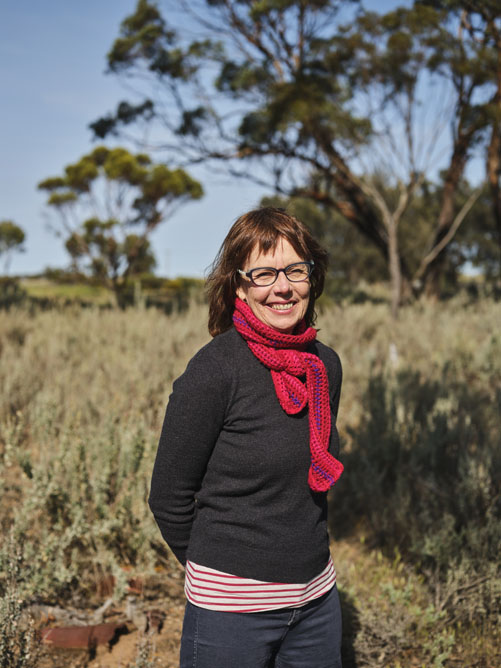
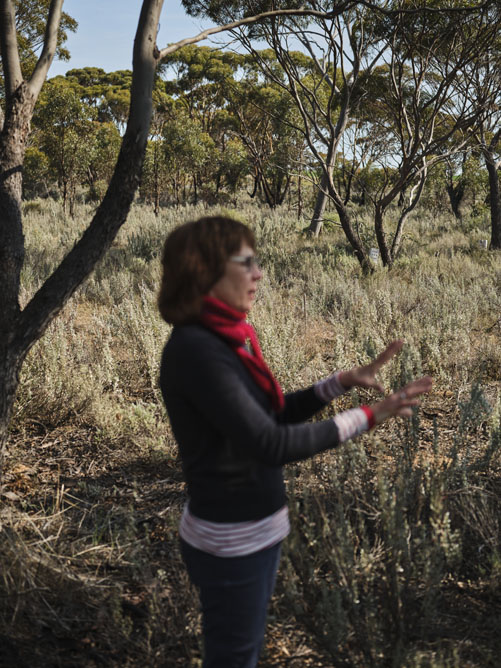
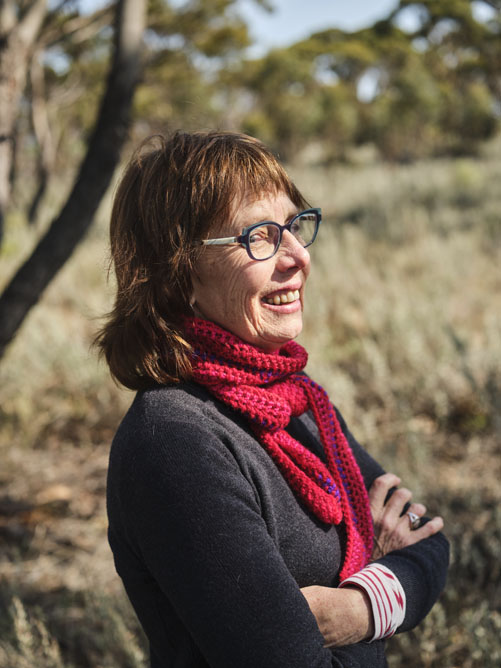
Image credit: Michelle Slarke. All photography in this story by Duncan Wright.
We recently caught up with Michelle in her hometown to learn a bit more about her practice and creative journey. On a cool morning in September, our conversation began amongst the mallee trees just outside of the Lake Grace Australian Inland Mission Hospital.
“I was born there” Michelle said, pointing toward the new hospital. “That was the ‘new’ maternity ward, built in 1952. My mum came here to work as a nurse when she was 20, met my dad and lived in the old hospital for a while, because that was used as accommodation. Now I live over there (across the road), so I’ve done this huge circle back to my place of birth.”
The Australian Inland Mission Hospital, which now functions as a museum, is also the subject of Michelle’s work in The Alternative Archive. Artefacts After Burning Series is an archaeological-like display of found and re-made hospital remnants – suture needles, glass thermometers and ampoules – that Michelle recovered from various dump sites around the town.
Under the dirt and leaf litter at our feet was more of this discarded material. Michelle picked up a piece of old glass and studied it in her hand. “I’ll come back sometimes and just walk through and find other things” she said. “It’s obviously rubbish. But it’s about this idea that it becomes important through time.”
She began this work in 2018 when she found a nurse’s fob watch in the bush. “The watch was missing a part, but I’d also found the valve off a bike tire somewhere, so I used that for the missing knob.” Michelle set herself the task of only using materials from the site, plus a little bit of glue. The outcome is a series of playful sculptures reminiscent of surgical instruments. “I was just playing with those really. They were kind of like the joke ones” she said.
As a teenager, Michelle travelled the vast three hundred or so kilometres to Perth to extend her education. “There’s a big gap in time when I wasn’t here” she explained. “I went to boarding school. I studied. I majored in Aboriginal Education and worked as a teacher up in Halls Creek. That was great. Then I came back down to Perth, worked, travelled, did a year at TAFE, and then went to Curtin. I worked as an artist for a while and also with an arts organisation.”
“In the late 1990s, I came home for a three-month break, and I ended up moving back. I think you do get to that point in your life” she added.
Michelle returned to Lake Grace with a teaching diploma and an arts degree, but her interest in writing and local history grew. “When you’re in a small community, and things need to be done, you kind of think ‘Oh, I could do that’.’ My first book was on women from the area who were significant achievers. I wrote their biographies.”
Today, this interest sees Michelle researching and developing resources for all sorts of projects and communities. She has worked with the Cape Naturaliste Lighthouse in Leeuwin-Naturaliste National Park, the Eyre Bird Observatory on the Nullarbor, and in 2022 she developed interpretive material for a local walking track, the Kwongan Heathland Walk, just outside of Lake Grace.
“I worked alongside the botanists on the research and wrote and designed the interpretive signs and brochure. A lot of that was at the computer, but some of it was sitting at my table drawing and painting, so that’s nice when that happens” she said.
“I’ve found I used to be able to retain all the information from these projects but learnt that you can’t because your head is just so full! And I used to take on whatever, but now I’m able to find my way to the projects that I’m really interested in, like conservation.”
In Artefacts After Burning Series, Michelle combined this work in heritage and research with her visual art practice. “It was a great thing to do, just sit in the bush and find these relics” she said. “I mean, I had to be careful of the snakes in summer. But really, it was about getting deep into a project, about curiosity and wonder, learning and questioning, and how that takes you through that wonderful creative journey.”
“I say I do heritage and interpretation, but really, artists interpret all the time” she added.
Image credit: Michelle Slarke. All photography in this story by Duncan Wright.
Every morning Michelle walks with her dog through the bush on her family’s farm. “It is about slowing down and being present. But it’s also about being with my mum. She loves the bush and we’re always going out looking at flora”.
Michelle shares many of her observations and encounters with the non-human world through her Instagram. It is a visual archive of ‘nature symbols,’ ‘worm drawings’ and ‘insect calligraphy.’ And a record of movement and activity; animal tracks, pathways carved out by critters on tree logs, or impressions in the sand left behind by lengths of grass, moved gently by the wind.
“An artist friend visited me, and we walked around the lake together. We were finding all these beautiful things, and we had this joke, ‘Is it a stick, or is it art?’. You do observe these things that might be perfectly proportioned, or just incredibly beautiful” Michelle shared. “So, it’s about how far you can take that”.
Her work Dried Algae Cut from a Fenceline Over a Salt Lake, in the Maelstrom exhibition in the 2021 Indian Ocean Craft Triennial (IOTA), speaks directly to this idea.
“That was a filamentous weed I found on one of my walks” she explained. “There’d been a lot of rain and weed was floating on top of the water. It had caught on the fence, hanging there like laundry!”
“I decided to cut the algae off the fence line. It dried just like papier mâché. I rearranged it, and a lot of thought went into it, but it wasn’t far removed from how I found it.”
In this way, Michelle’s practice is like a form of caretaking or tidying of her environment. “It’s that idea of only using the materials that come from the site or that are not going to make an impact. Or you know, just being thoughtful about that. Because it’s contradictory to talk about environmental issues and then use plastics or toxic materials as an artist” she explained.
For a new project, Michelle has been collecting fallen birds’ nests that are, heartbreakingly, constructed from all sorts of plastics waste. “Most of these nests have cotton, polyester wadding, flywire, and bailing twine from the local farms. These nests are quite inventive, but at the same time, they are an indication of pollution.” She has been mapping the locations of the nests with GPS and photographing them where they are found. “I don’t know what I’ll do with that yet, but I’ll go from there” she said.
“The environmental aspects in my work, it is about being here in Lake Grace, but it’s also about the state of the world. And how, as you get older, you notice those changes – and losses – in the environment.”
We can’t wait to see how Michelle’s new project develops and where she takes her practice into the future. For now, you can see Michelle’s work Artefacts After Burning Series in The Alternative Archive now at Bunbury Regional Art Gallery (BRAG) until January 24, 2024.

